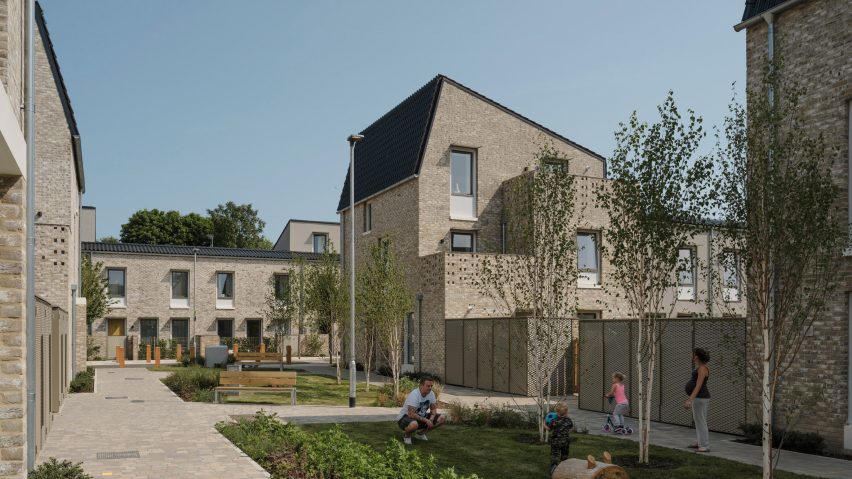
"I really hate the word 'social' housing" says Annalie Riches
Architects are often wrongly blamed for past failures in social housing, Mikhail Riches co-founder Annalie Riches says in this Social Housing Revival interview.
Riches set out in her career to design great social housing, in a bid to challenge what she saw as a prevailing notion that architects "can't do housing".
However, she confesses to taking issue with the term "social housing" itself.
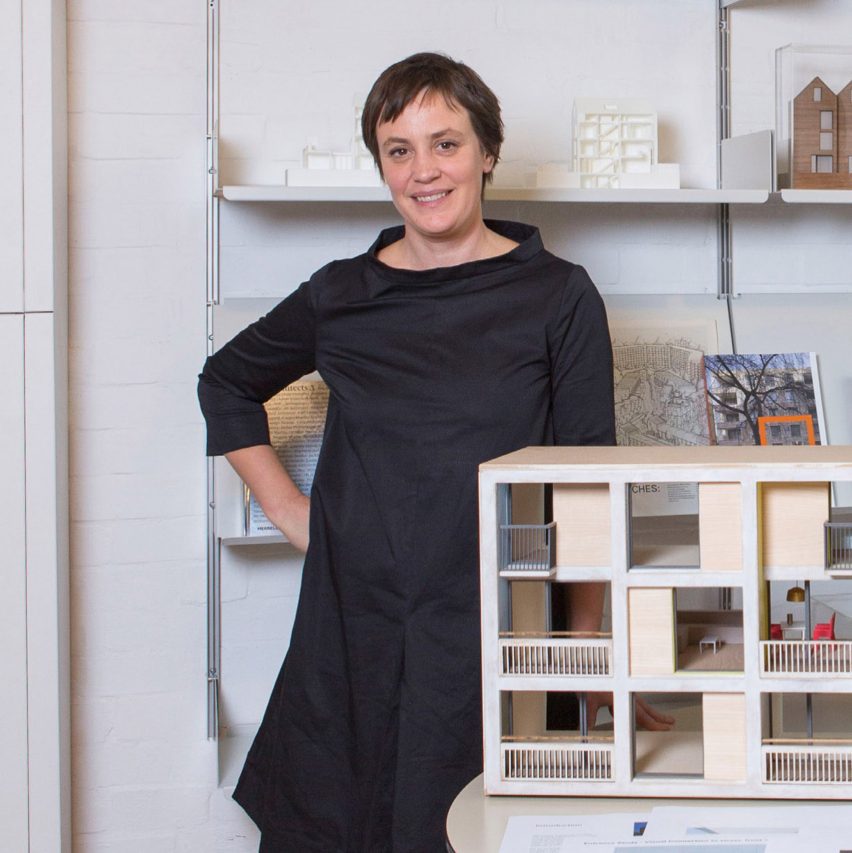
"I really hate the word 'social' housing," she told Dezeen. "The word implies there's a problem."
"I think of it just as housing. I wouldn't design it any differently whether it was private – to me, it's housing."
Founded together with David Mikhail in 2015, her London-based studio designed the celebrated, Stirling Prize-winning council-housing development Goldsmith Street.
The precursor studio to Mikhail Riches established in 2005, Riches Hawley Mikhail Architects, was founded expressly to specialise in social housing, Riches said.
"I was probably the driving force for it," she admitted. "I've always wanted to get involved in housing."
"I point to Margaret Thatcher"
Riches' interest in social housing stems from a fascination with Sheffield's Park Hill, acquired while she was studying for an architecture degree in the city.
Completed in 1961, Park Hill is a brutalist former council-housing estate. Now Europe's largest listed building, in the late 1980s it was in a state of decline with its "streets in the sky" accused of attracting anti-social behaviour.
"I was a student at Sheffield and Park Hill was like a really big building in that city and was considered to be failing," she recalled.
"And at that time there was this idea that architects couldn't do housing. I think they were blamed for a lot of the failures of those large housing schemes, and I think that made a big impact on me."
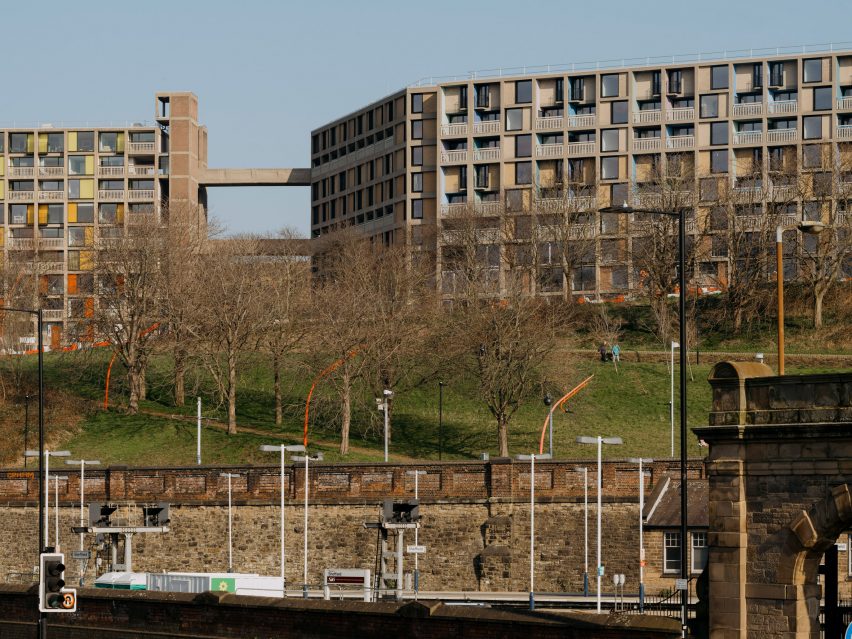
That blame, Riches argues, is unfair.
"It's a lot more complex, the failure of those buildings – it's really easy to blame the architects and the design of them," she said.
"I point to Margaret Thatcher – job losses, decline of the steel industry, unemployment, a loss of hope and confidence in the state, and then a lack of funding to maintain it."
Mikhail Riches was appointed architect on the second phase of a refurbishment of Park Hill led by developer Urban Splash, in a competition Riches was "desperate to win".
As well as improving the energy efficiency of the buildings, the architects made subtle interventions such as adding colourful panels to the facade – picking up on the fact that many residents had painted their balconies.
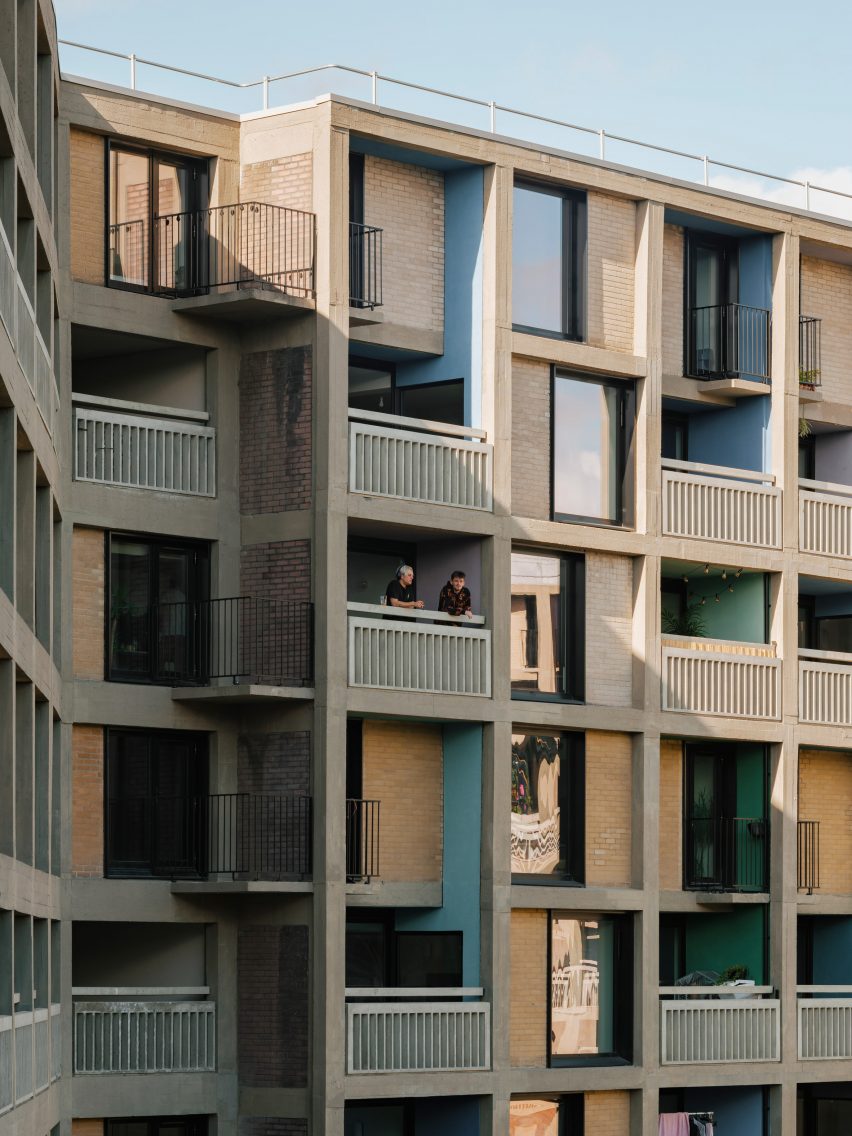
There were, Riches acknowledges, some issues with Park Hill's design that meant that "once it was on the decline, it was quite good for bad behaviour" – and the studio tried to address those, introducing street-facing glazing to make the public areas more visible.
"It's just an awesome building," she said. "The aspiration of it is extraordinary. It came from a time where architects were involved in trying to solve problems."
Today, she argues, architects' ability to solve problems has been significantly curtailed, as they are sidelined in decisions about project budgets, costs and procurement.
"The power has been taken away," she said. "No one really talks to architects, I don't think. We're not trusted, and people think that we just cost a load of money and add fripperies to things."
Goldsmith Street "had to bend rules"
One rare project where the architects were trusted was Goldsmith Street, Mikhail Riches' council-housing project for Norwich City Council completed in 2019.
Comprising 105 Passivhaus homes in a streets-based layout, it is the only social-housing scheme to have won the Stirling Prize – awarded to the UK's best new building – in the competition's 26-year history.
Riches says she did not anticipate the project's impact during the design process.
"You never think that kind of thing is going to happen," she said. "It was only when I went to the site and it was quite built that I was like, 'actually, this looks quite good'."
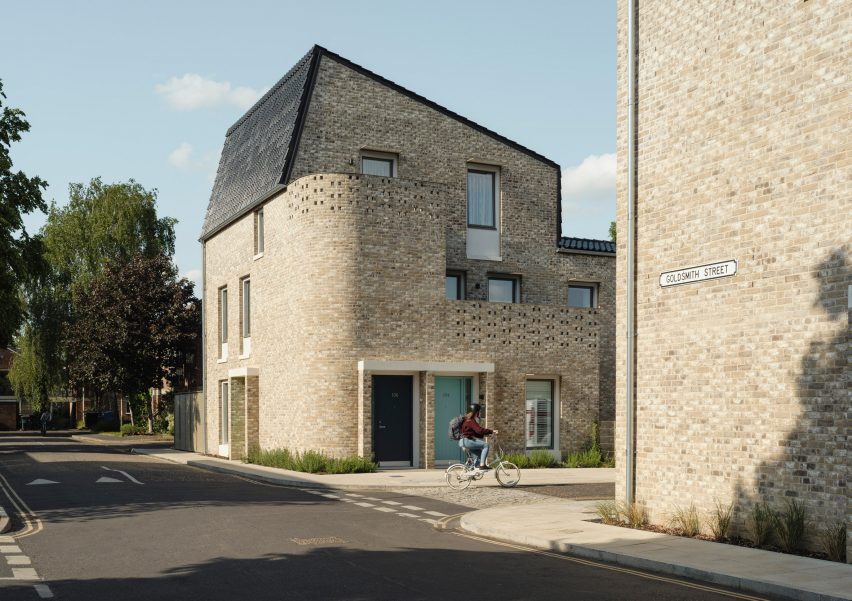
The impact on residents has also been profound. Mikhail Riches has received reports of tenants who have managed to pay off debts and seen marked improvements to their health since moving in.
One resident sent the studio a letter detailing how since coming to Goldsmith Street, she is no longer reliant on food banks and has been able to entertain guests for the first time in years.
"It had us all in tears," said Riches. "It's made such a big difference to her life."
In order to deliver the required density on the site without resorting to apartment blocks, the studio had to find ways around certain planning rules, particularly those restricting the overlooking of neighbours.
"To achieve what we achieved, we had to – not break rules – but we had to bend them," said Riches.
The solution was to mimic the layout of nearby Victorian streets with rear alleyways – albeit with a much wider gap between the buildings – tweaked so that all first-floor habitable rooms faced the same direction.
Unusually, and crucially, on Goldsmith Street Mikhail Riches was contracted directly with the council as the client, as opposed to the more commonly used design-and-build set-up, where the architect is sub-contracted to a main contractor.
That gave the studio much greater leverage to try new things and negotiate with third-party agencies during the project.
"I think there is inevitably a loss of quality with design-and-build," said Riches. "There are some we've had to walk away from because you don't have any power in that process."
Mikhail Riches is now working on a series of projects for York City Council that takes a similar approach to Goldsmith Street, but which Riches says is "even more ambitious" on sustainability and biodiversity.
"We're wilfully just doing the same old stuff"
However, while Riches had harboured hopes that the success of Goldsmith Street would spark a flurry of equally ambitious social-housing projects around the country, that has not yet been the case.
"Actually it was quite a low-cost project, it wasn't expensive," she said. "And I thought, 'well, now everyone's going to be doing this – we've shown it can be done'. But it's not that easy."
Aside from restrictive planning policies that are "not helping to deliver quality", Riches points to increasing difficulty for architects working on council-housing projects as cash-strapped town halls demand more work for less money.
"It's just becoming untenable for practices our size, which is such a shame because that was what we really wanted to do – we wanted to deliver social housing with local authorities," she said.
"But it's getting to a point now where it feels like a race to the bottom."
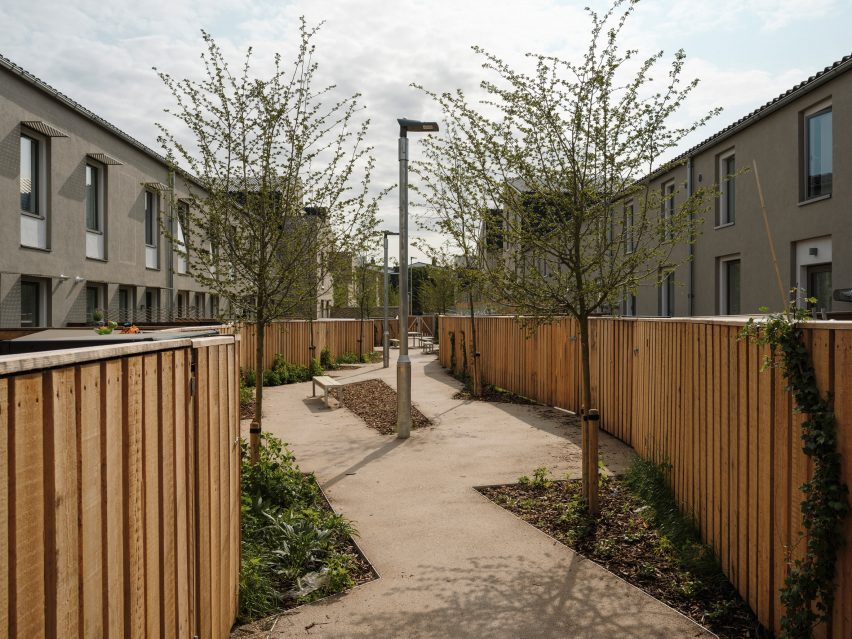
The main barrier to delivering more, better social housing in the UK, Riches contends, is a lack of political will.
"We've had a series of governments that haven't wanted to work out how to do this," she said. "It feels like we're wilfully just doing the same old stuff without even thinking about it."
There are a growing number of architects wanting to make a difference, she said, but they have limited influence.
"There's a lot of good architects wanting to build good housing, which when I started doing housing wasn't really the case," she said.
"So I think design quality for housing is massively on the up, but the problem is most housing built in this country isn't by those architects."
"It's very difficult to work out how to be proactive and to actually change the debate. If you do something, and it's out there, and you can show it's done, and it's not been a big deal to do it – that's maybe the biggest power we've got at the moment."
The photography is by Tim Crocker unless otherwise stated.

Social Housing Revival
This article is part of Dezeen's Social Housing Revival series exploring the new wave of quality social housing being built around the world, and asking whether a return to social house-building at scale can help solve affordability issues and homelessness in our major cities.